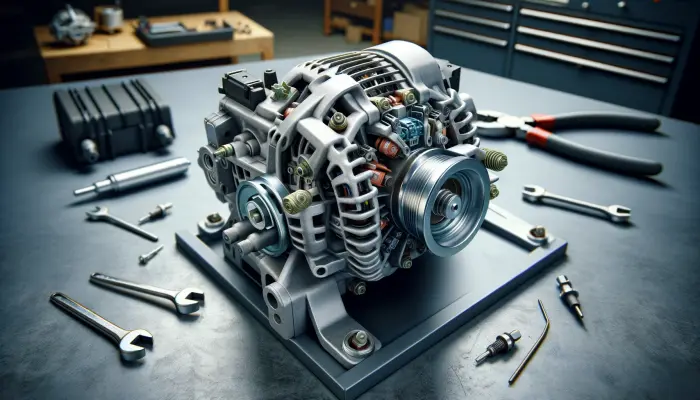Problems in the car's electrical system are often related to generator defects. Uneven electricity distribution, interruptions in current supply, or complete absence of power can make driving challenging. While diagnosing a generator fault is relatively simple, accurately determining the nature of the malfunction and the subsequent repair requires considerable effort. When issues arise in this critical system, it is recommended to seek a specialized service for prompt restoration of its function.
Identifying Problems in the Generator
A functioning electrical system is necessary for the stable operation of a car's built-in devices. The auto generator converts the engine's mechanical energy into electrical current, charging the battery and powering onboard systems. Signs of generator malfunction may include:
- Unstable voltage;
- Activation of the malfunction indicator on the dashboard;
- Intermittent or absent electrical power;
- Unusual noises during operation.
Before seeking professional service, it's advisable to check factors such as the tension of the drive belt and the condition of the bearings. If these steps do not resolve the issue, professional auto service is the best solution. Comprehensive diagnostics at the service center will accurately identify the cause of the malfunction and determine the possibility of replacing damaged components.
Generator Repair
The complex structure of a car's generator includes many components. Special instruments like ammeters and voltmeters are used for diagnostics. The breakdown can be due to mechanical issues, such as wear of rotating parts or damage to the windings. The generator's performance is also affected by the wear of brushes or the contact assembly.
Diagnosing the electrical system at home is challenging and requires knowledge in automotive mechanics and electrical equipment. Often, a generator's malfunction does not necessitate its complete replacement. Quality diagnostics at an auto service can quickly establish the cause of the fault and restore the car's functionality.
Generator Maintenance
Ignoring problems in the electrical system won't lead to savings. At the first signs of malfunction, it is important to seek diagnostic services. Proper car maintenance includes timely replacement of worn parts, helping to prevent more serious breakdowns. An initial inspection of the generator can be performed independently, but all further work should be entrusted to professionals.
Preventative Measures to Avoid Generator Breakdowns
Prevention is key to maintaining the durability and reliability of the generator. Regular maintenance and attention to several important aspects can significantly reduce the risk of breakdowns. Here are some preventative measures:
- Regular voltage checks. Ensure the generator is producing the right voltage. This can be checked with a voltmeter.
- Drive belt inspection. Check the tension and condition of the generator's drive belt. A worn or loose belt can lead to insufficient energy production.
- Cleaning and checking contacts. Dirt on contacts can lead to poor conductivity. Regularly clean and check all contacts and connections.
- Checking the condition of brushes and bearings. Worn brushes and bearings can cause generator malfunctions. They should be replaced in a timely manner.
- Avoiding overloads. Avoid excessive loads on the car's electrical system, as this can lead to overheating and wear of the generator.
By following these simple yet effective steps, you can significantly extend the life of the generator and avoid unwanted breakdowns, which in turn ensures a more reliable and safe operation of the car.
